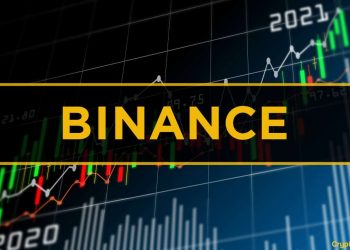The sales of NFT have skyrocketed in recent months. According to nonfungible.com, $356 million in USD was exchanged across seven of the top NFT marketplaces during the first week of August.
In a future where people could nearly access everything thanks to NFTs, it would be wise for any business owner to select NFT Marketplace Development.
No indications of slowing down
NonFungible.com’s 2020 year-end report estimates that the NFT market was worth roughly $210 million in total market capitalization in 2019. According to the research, the market cap might reach $315 in 2020 and $700 million in 2021.
Surprisingly, according to coinmarketcap, the NFT market valuation has exceeded the projections and is already at over $33 billion. This demonstrates unequivocally that the NFT market is not a passing trend like it was in 2017 and has the potential to grow into a trillion-dollar industry.
NFT Marketplace Models
NFT marketplaces serve as platforms for minting, storing, displaying, and exchanging NFTs. These have been crucial in the NFT market cap’s meteoric expansion. Look at this: OpenSea, one of the top NFT markets, recently achieved record sales of $1.5 billion.
Although there are many different kinds of NFT marketplaces, the ones that focus on collectibles or are universal are the most well-liked. This is due to the fact that sports and collector NFTs account for over 60% of overall sales and are the most traded NFTs.
Favored types of NFT markets
- Universal NFT markets similar to eBay: These marketplaces provide peer-to-peer transactions between NFT buyers and sellers. Raible and OpenSea are two examples. However, these two also differ in terms of how they encourage the production of NFTs.
- Markets of the single NFT variety: Some online markets, such as SuperRare, solely permit the trade of expensive digital art, one sort of NFT. Prior to being posted on the site, it ensures that NFTs have been carefully selected.
- Hybrid markets for NFT: Businesses are integrating NFT markets into their digital platforms so that they may provide users with digital experiences. Custom avatars can be created by customers on these markets and then sold on the NFT market.
What are the most popular trends in the NFT industry?
A 10% growth since May 2021, 85% of Defi users claim to have interacted with NFTs, according to DappRadar’s most recent portfolio tracking tool. Even the usage statistics for the Ethereum blockchain show that over 202% more unique wallets are now engaging with NFTs.
NFT markets are looking at more strategies to attract more NFT users as interest in the area is surging. Here are some current trends:
● Switching to Layer 2 protocols with minimal gas costs
With regard to the controversial Ethereum gas fees, NFT marketplaces have been having difficulties. However, some of the top platforms are currently switching to effective Layer-2 options like Polygon and Immutable-X. These markets claim that once they switch from Ethereum to Layer-2 solutions, their transactions will use 100 times less energy.
Additionally, OpenSea will shortly switch to Immutable-X, a layer-2 gasless technology created specifically to support NFT transactions.
● Cross-chain NFT marketplaces
The lack of cross-chain trading between NFT markets has limited the possibilities of NFT trades. But things are starting to shift now. Users will be able to trade NFTs between the Ethereum and Solana blockchains thanks to a cross-chain NFT marketplace that exchanges like FTX have said will debut. To realize the full potential of NFTs, it is essential to break down these blockchain silos.
● Airdrops Token
Recently, SuperRare gave its users an airdrop of the platform curation token, RARE. These free tokens were given out to everybody having a SuperRare account. Such airdrops have in the past caused a surge of users to the site that carried out the drop, and it appears to be emerging as a new trend in the NFT space.
● Curation tokens
Many NFT traders are eschewing general NFT marketplaces in favor of online spaces where they can access hand-selected, premium NFTs. The platforms reward curators with curation tokens in order to guarantee that only premium NFTs are published on their marketplaces. Thus, merely curating NFTs on a marketplace can earn someone money who has experience in art curation.
● NFT join the excitement around yield farming
The NFT and Defi industries are attempting to converge and profit from one another. This has led to the yield farmers employing NFTs as a fresh method of utilizing digital assets through Defi protocols. Many prospective Defi platforms are offering cutting-edge liquidity mining strategies in which liquidity providers are rewarded with illiquid NFT tokens rather than farming payouts. Then, these tokens can be packaged into NFT collectibles and offered for sale online.
Also Read: How To Create An NFT Minting Website
● The in-game market
NFT trades made in-game are increasing. As a result, many well-known games, such as Axie Infinity, added an in-game market, and they were incredibly profitable. In contrast to OpenSea, the top NFT market, Axie Marketplace actually sells more than 50,000 Axie NFTs daily.
● Players from the mainstream entering the scene
The largest international e-commerce company, Shopify, permitted direct NFT trading by its merchants. This will provide retailers more control over the sale and consumer connection claims Shopify. Shopify will support credit and debit card buy/sell for NFT traders, but it does not intend to compete with OpenSea or Raible. With big-name competitors like Shopify entering the industry, a new type of NFT marketplace may emerge.
● Investments by venture capitalists in NFT markets
Renowned venture investors have made investments in several of the top NFT markets during the past six months. Nearly all well-known NFT marketplaces, including OpenSea, Raible, and Mintable, have obtained funding from illustrious investors. This strongly suggests that NFTs are no longer a trend as was previously thought.
The Last Wise Words
NFT marketplaces are a key component of NFT trading and may be essential to the widespread adoption of NFTs. It appears we are about to experience trading on next-generation NFT marketplaces as platforms shift to scalable, affordable solutions and more established firms enter the market.
Author Bio: Suzanne Dieze is a technical content writer and preferably writing technology-based blogs and articles. I have a few published pieces under Mobile Based Applications, and Data science consists of proven techniques, future costs, and benefits.
You Tube: https://www.youtube.com/channel/UCeQxeLMlW97IwiU-SzjrPBg
Twitter: https://twitter.com/DiezeSuzanne
Pinterest: https://www.pinterest.com/suzannedieze/











